Matador Network's Blog, page 708
February 3, 2021
No travel to Oceania

Oceania is full of wish-list, dreamy destinations such as the Cook Islands, Tonga, Fiji, French Polynesia, Australia, and New Zealand. Unfortunately, now is not the time to check them off your must-see list as all Oceanic countries are closed to tourists.
While French Polynesia had been open to US tourists until recently, it just announced that starting on February 3, it will be closing its borders to all travelers due to an increase of COVID-19 cases around the world.
According to the local tourism board, “Faced with the resurgence of COVID-19 cases around the world and in order to preserve French Polynesia which has for its part, shown significant improvement for several consecutive weeks, the authorities have decided to temporarily suspend travel to The Islands of Tahiti including for tourists from all origins until further notice.”
Any tourist currently in French Polynesia and planning to return home this week will be allowed to continue their trip. Others need to make arrangements to leave as soon as possible. French Polynesia is expected to remain closed to all tourists for a minimum period of two months.
New Zealand also recently dashed visitors’ hopes, announcing that the country’s borders would remain closed to international travelers until its citizens were widely vaccinated. “For travel to restart,” said Prime Minister Jacinda Ardern last week, “we need one of two things: we either need the confidence that being vaccinated means you don’t pass COVID-19 on to others — and we don’t know that yet — or we need enough of our population to be vaccinated and protected that people can safely re-enter New Zealand. Both possibilities will take some time.” 
A version of this article was previously published on November 4, 2020, and was updated on February 3, 2021, with more information.
More like thisCOVID-19I’m a US citizen. Where can I travel in Asia?The post French Polynesia is now closed to tourists appeared first on Matador Network.

February 2, 2021
Thru-hiking Midwest's Ice Age Trail

One boot step on frozen ground after another, Emily Ford is making history. On December 28, she set out from Potawatomi State Park, Wisconsin, on Sturgeon Bay to walk the length of the Ice Age Trail. She hopes to arrive at St. Croix Falls on the border with her home state of Minnesota at the end of March.
When she gets there, the 28-year-old will be the first Black woman to complete the entire 1,200-mile trail and the first woman to complete it in winter.

Photo: Emily Ford/Facebook
Ford is accompanied by Diggins, an Alaska husky on loan from a dog sled kennel. The cold would be too much for her own dog, who is at home with Ford’s partner in Duluth, Minnesota. Ford is carrying her tent and other gear on her back, and Diggins is toting her own supplies, which include a bell and light, orange colors in the event of hunters, a coat for very cold weather, a food and water bowl, and Musher’s Secret balm for her paws.
Friends drop by provisions once a week, which is also when Ford posts on her Instagram account Emilyontrail and checks messages. Matador connected with Emily via her weekly Instagram check-ins. We asked her to tell us about an unexpected bright spot of her journey.
“The people who let me camp on their lawns always make me feel so loved,” Ford told us. She adds, “Like sometimes it gets too late so I have to just knock on doors and hope the person is nice and says yes.”

Photo: Emily Ford
From the onset, Ford included camping on private property in her planning. That’s in part because campgrounds are currently closed — both because of COVID-19 and because of the winter season. But finding creative places to camp has also been necessary because the entirety of the Ice Age Trail is not actually open.
One of only 11 National Scenic Trails — among the others are the Pacific Crest Trail and the Appalachian Trail — the Ice Age Trail carves a meandering path across Wisconsin, first heading south on the Door Peninsula with stretches along Lake Michigan along the state’s eastern edge. Then the trail u-turns just 10 miles from the Illinois border and heads north again through the middle of the state. Near the north end of Wisconsin, the Ice Age Trail turns east and curves its way to its endpoint on the border with Minnesota.
The trail is so named because its unique landscape was carved by receding glaciers from the last ice age about 12,000 years ago — leaving behind odd hills called kames or drumlins, depending on their shape; stratified areas called eskers; outwash plains where glaciers ended; and many, many lakes. The trail is supported by the Ice Age Trail Alliance, which is working to see it completed all the way through.
In areas where the trail is unfinished, it has occasionally involved hiking on paved roads. When I first checked in with Ford, that had been one of the few issues for her. “Just a couple of body hiccups,” she’d written — since walking on hard surfaces is so much harder on the knees.
Ford likes long-distance treks, and winter is when she can do them. She is the head gardener at Glensheen Mansion, a historic house operated by the University of Minnesota, and given the limitations of gardening during a Midwest winter, the cold months are Ford’s time off. She also told the Milwaukee Journal Sentinel that she loves winter as she’s not a fan of mosquitos, both of which make the colder months ideal for trekking.

Photo: Emily Ford/Facebook
As Ford wrote on her Instagram, she had the good fortune to stay a couple of nights in a heated outbuilding along the trail, giving herself and Diggins the rest they needed. She also refers to the “trail angels” who she has met along the way and the “trail magic” of so much love.
“The people have been great! Having Diggins along has been awesome,” Ford messaged me.
Ford is now headed northward through the middle of Wisconsin, after completing the southward stretch. On her most recent post notes, she writes that the town of Lodi is “quite awesome.” Ford said Lodi’s middle school has a “Trail Trekkers” program, and its students had left her signs at the trailheads. Notes Ford with a few heart and laugh emojis: “The best line from one of the students was, ‘Push through this hike, because no one else will do it for you!’ Tough love from a middle schooler.”
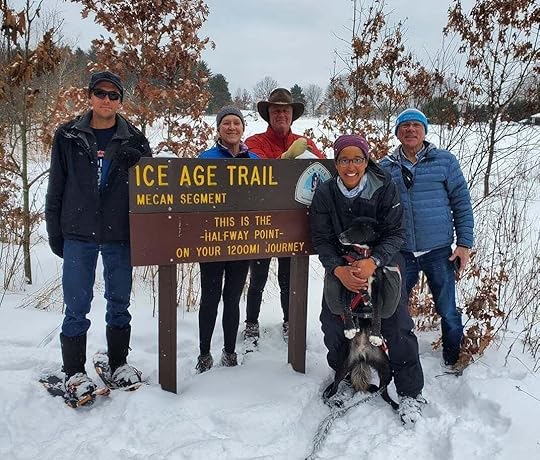
Photo: Betsey Weltey + Ice Age Trail Alliance/Facebook
When she recently reached the halfway point, well-wishers from the county came to cheer her on. Beyond the assistance from locals and online support on her Instagram and her Facebook, Ford’s journey has also been reported by TV news programs and newspapers in her native Minnesota and in Wisconsin. That’s a good thing because, following 2020, Ford felt that setting a positive example is an important part of the trek.
“2020 started happening and unfolding itself and with the murder of George Floyd over in Minnesota and other stuff happening in other states, I’m just like, man, there’s got to be a way that I also can get my voice out there too for people of color and just continue to equalize the boundaries,” Ford told local TV station WMTV.
“Many other people have completed this trail, but winter is the elusive season for most folks. So I’ll be the first woman, the first Black woman, and I’m sure the first Black gay woman. I’ll tack that one on there!” Ford told WMTV.
While we’re seeing more BIPOC outdoor influencers, many of these are located in coastal states. Ford said she was originally seeking hiking companions but didn’t find any in the Midwest. “I checked out message boards and did some research on the internet to find a partner, looking for other people of color who are interested in backpacking or hiking. There are a lot of groups like that on the coasts and in the south, but I didn’t find much in the Midwest,” Ford told her alma mater Gustavus Adolphus College.
Ford’s journey is changing that by showing that BIPOC outdoor lovers are also in her part of the world. As she posted, “For the people who look like me and are afraid to spend a night under the stars. I don’t want others to be deprived of such calm and beauty because of societal fear.”

Photo: Emily Ford/Facebook
She continues: “I want people to know that literally ANYONE can play outdoors. No matter which boxes you do or do not check. Through my time backpacking, I’ve never really met another Brown person backpacking, skiing, or mountain biking. I know that Brown people are outdoors (I see it on Instagram now!) But I want to add to the story.”
One reason encouraging others to get outdoors is so important for Ford is because the outdoors is a judgment-free space. As she told her old college, “Nature is a place of equality in society … This is about opening the door for more people of color to enjoy the outdoors.”
“Nature treats us all the same.” 
The post Emily Ford makes history by hiking the 1,200-mile Ice Age Trail in winter appeared first on Matador Network.

Beautiful abandoned places
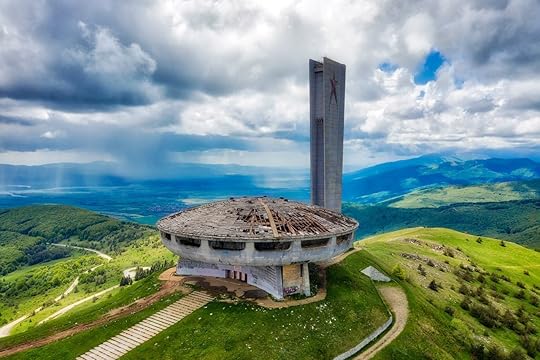
As obsessed as humans are with progress, decline and deterioration seem to similarly fascinate us. The sight of trees growing through concrete, deserted mine shafts reclaimed by nesting birds, and ghost towns in the middle of the desert remind us about the strength and the perseverance of nature.
In a world obsessed with excess, the following abandoned places are made beautiful by subtraction. It’s the absence, the regression, and the return to nature that make them appealing. Whether it’s a train cemetery in Bolivia, a German sanitarium in disrepair, or an abandoned village in Italy, it’s clear that a place doesn’t have to be inhabited to capture the attention. These 45 sites are the most eerily beautiful abandoned places in the world.
1. Pripyat, Ukraine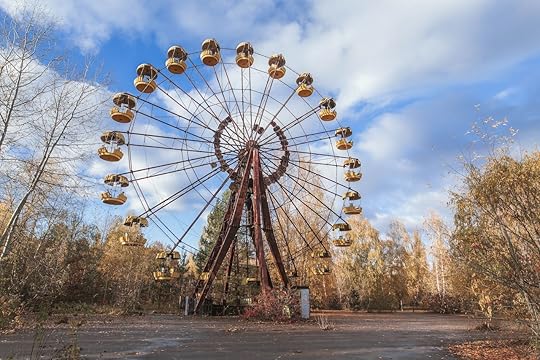
Photo: Elvis Zaldaris/Shutterstock
The Ukrainian town of Pripyat is over 90 miles from Kyiv and sits right next to the nuclear plant of Chernobyl. In 1986, one of the nuclear reactors infamously exploded and forced the evacuation of over 115,000 people. Roughly 49,000 inhabitants, primarily from Pripyat, were the first to be evacuated, and the site has been a ghost town for decades, haunted by the memory of the nuclear disaster and still plagued by lingering radiation. Today, however, curious travelers are able to visit as long as they are part of a tour group taking the appropriate safety precautions.
2. Tunnel of Love, Ukraine
Photo: GoodMan_Ekim/Shutterstock
This nearly two-mile stretch of private railway is used by a train near Klevan, Ukraine, which services a nearby fibreboard factory. The rest of the time the lush tunnel is full of people out for a stroll. The foliage has grown around and above the train tracks to form a surreal-looking tunnel of green arches, making for a rather romantic atmosphere. Supposedly, couples who visit the tunnel are granted a wish as long as their love is true.
3. Olympic Village, Berlin, Germany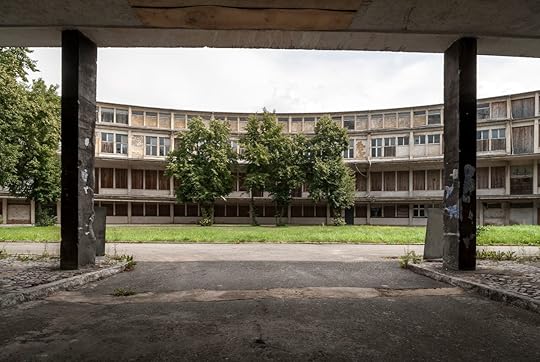
Photo: Jay-Dee /Shutterstock
Abandoned Olympic parks always have a certain mystique surrounding them, but the Olympic Village in Berlin has a heavier, more somber air than most. The 1936 Summer Olympics, commonly called the “Nazi Olympics,” was filmed by Hitler’s favorite documentarian and Nazi propagandist Leni Riefenstahl to make her controversial film “Olympia.” After World War II, the village was occupied by the Soviet Army, which used it as a torture base. It has been abandoned since the fall of communism in Germany.
4. Houtouwan, Shengshan Island, China
Photo: oceanfishing/Shutterstock
This village on Shengshan Island, east of Shanghai, was once a thriving fishing community. Due to lack of access to education, food delivery, electricity, and running water, the island has been abandoned since the early 1990s. Now it looks like it is being slowly but surely swallowed up by nature, its crumbling houses mostly covered by thick layers of ivy. You can hike to the top of one of the island’s many hills for a sweeping view of the abandoned community.
5. Maunsell Forts, Thames Estuary, England
Photo: Mark Castro/Shutterstock
From afar, these defensive platforms look like props from a Star Wars movie. They were actually erected during WWII in estuaries of the Thames and Mersey rivers to protect England against attack from Nazi Germany’s aircraft. After they were decommissioned, several were destroyed by ships running into them, and some were used as pirate radio stations in the 1960s and 1970s. Paddy Roy Bates claimed Roughs Tower, a Maunsell Fort with a different design, in 1967 and developed the Principality of Sealand, but the other towers remain unoccupied.
6. Power Plant IM, Belgium
Photo: ikumaru/Shutterstock
This coal-operated plant in Charleroi, Belgium, is said to have begun operations around the 1920s and ceased production in 2007 once it was found to be responsible for an excess amount of Belgium’s CO2 emissions. It’s currently set for demolition, but in the meantime it’s a popular target for metal thieves.
7. Buzludzha Monument, Bulgaria
Photo: Lukas Bischoff Photograph/Shutterstock
This bizarre flying-saucer-shaped monument was built in 1981 to commemorate secret socialist meetings that were the precursor to the Bulgarian Communist Party. It is no longer maintained by the government and has been abandoned since 1989. It now stands as a relic of the angular, concrete architecture that defined the Soviet aesthetic.
8. Eastern State Penitentiary, Philadelphia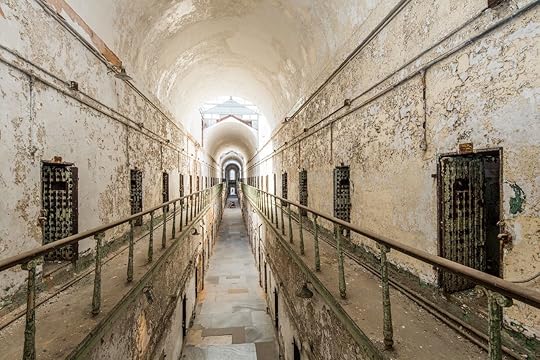
Photo: MISHELLA/Shutterstock
Prisons full of criminals are always a bit scary, but apparently empty ones are even more so. Called “the world’s first true penitentiary,” this prison was designed to force criminals closer to God through torture, months in solitary confinement, and enclosure in bitterly cold cellblocks. (Al Capone served his very first prison sentence here after being charged with carrying an unlicensed revolver in 1929.) It ceased operations in 1971 but has been open for tours since 1994. Notably, the prison grounds contain tunnels dug by inmates trying to escape.
9. Muromtzevo Mansion, Muromtzevo, Russia
Photo: DedMityay/Shutterstock
At first glance, this mansion looks like a fairytale castle. Look a little closer, and the ravages of time become apparent. This elaborate 80-room mansion took five years to build and was completed in 1889. After the Russian Revolution, its owner donated it to the state to avoid it being looted. The mansion became a college and later a hospital before being completely abandoned. Like many other abandoned structures, nature has taken over, the surrounding foliage encroaching on the stones and old walking paths.
10. Cape Romano dome homes, Florida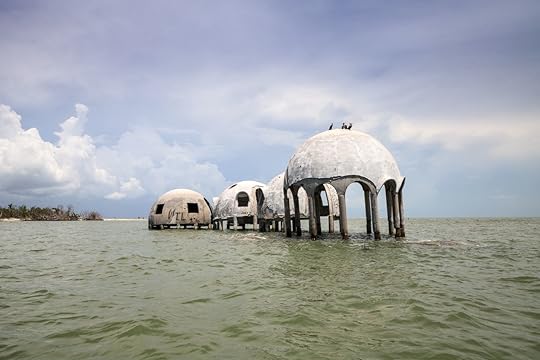
Photo: SunflowerMomma/Shutterstock
If you’ve ever seen the movie Waterworld, these domes off the coast of Florida should strike a cinematic note. The Cape Romano Dome House is an abandoned house consisting of six separate domes on stilts, 300 feet off the coast of Cape Romano Island. It was built in 1981, abandoned in 1992, has no landing or docking facilities, and currently sits abandoned.
11. Moynaq, Uzbekistan
Photo: Matyas Rehak/Shutterstock
It’s hard to believe that Moynaq used to be a port town of 30,000 people. Unfortunately, Soviet irrigation projects drained the Aral Sea’s tributaries and left Moynak 93 miles from the nearest water source. The seabed was further polluted with runoff from the cotton industry.
12. Skellig Michael, Ireland
Photo: Klickpunktsport/Shutterstock
Fans of the Star Wars film Episode VII “The Force Awakens” and Episode VIII “The Last Jedi” will immediately recognize this site. A Unesco World Heritage site, the remote monastic settlement dating all the way back to the sixth century has been abandoned since the 13th century when the monks relocated to the mainland of Ireland. Inhabited for hundreds of years, the island is still home to a number of well-preserved beehive-shaped huts, two oratories, a church, stone terraces, stone steps, and more — but there’s no Luke Skywalker in sight.
13. Chaiten, Chile
Photo: Maciej Bledowski/Shutterstock
Chaitén was formerly the capital of the Palena Province until the Chaiten Volcano in Northern Patagonia erupted in 2008 after being silent for 9,000 years. A volcanic lahar caused a nearby river to divert its course, and the town at the volcano’s base was destroyed. In 2011, the president of Chile announced plans to rebuild on the original location. A rebuilding process is currently underway, but the capital of the province has been permanently moved to Futaleufú.
14. Hashima Island (Battleship Island), Nagasaki, Japan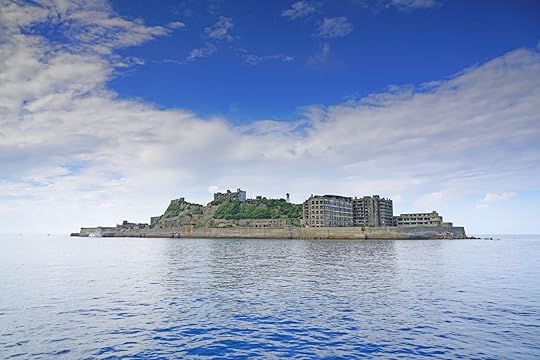
Photo: EQRoy/Shutterstock
It’s not quite a battleship, and it’s not quite an island, but from afar it looks like both. Hashima Island (or Battleship Island) sits just over 10 miles off the coast of Nagasaki and is known for its abandoned concrete buildings and defensive sea wall. Now uninhabited, it had been a forced labor site for Korean and Chinese workers before and during World War II.
15. Kalavantin Durg, India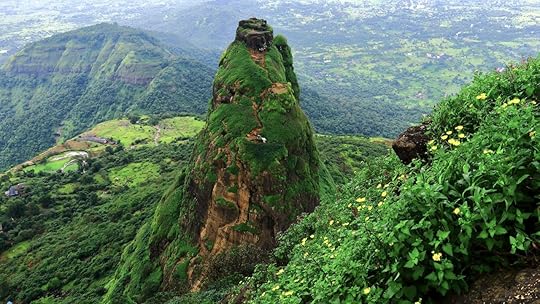
Photo: Chetan Shende/Shutterstock
According to legend, this 530 BC fort was built around the time of Buddha for a queen named Kalavantin, but this has never been confirmed. The steps leading up to the fort-like cave (which sits at an elevation of 2,300 feet) were cut into the rock of the hill. You can see for miles from the top of the fort. It’s a popular hiking destination, as long as you’re prepared for a steep climb.
16. MS World Discoverer, Roderick Bay, Nggela Islands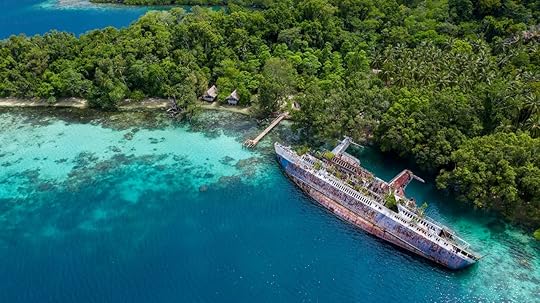
Photo: Romaine W/Shutterstock
This cruise ship was built in 1974, specifically for polar voyages, and had a double-hulled construction to protect it against collisions with ice. It apparently didn’t protect against every obstacle, however, because in 2000 the ship hit an uncharted reef in the Solomon Islands and all the passengers had to be evacuated. The captain then steered it into Roderick Bay, where it has remained grounded and abandoned ever since.
17. Buffalo Central Terminal, Buffalo, New York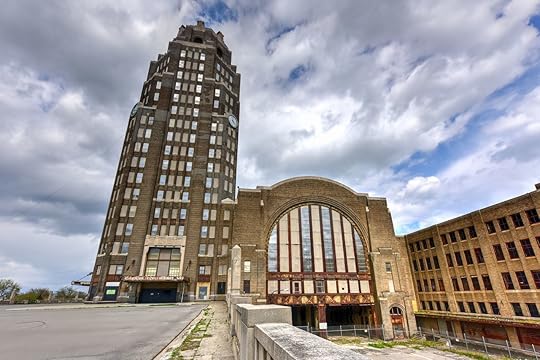
Photo: Felix Lipov/Shutterstock
This old train station is worth a visit, just don’t expect to catch a train here. The Buffalo Central Terminal is a 17-story art deco building that was Buffalo’s main railway terminal for 50 years before it finally closed in 1979. In 1997, after years of abuse, the Central Terminal Restoration Corporation purchased the derelict building and is currently in the process of restoring it.
18. Spinalonga Island, Greece
Photo: Richard Whitcombe/Shutterstock
From 1904 to 1957, Spinalonga functioned as a leper colony and was one of the last such colonies in Europe. The last inhabitant of the island was a priest committed to upholding the tradition of the Greek Orthodox Church in which buried people must be commemorated at five-year intervals. He finally left in 1962, after which time it became completely uninhabited. Now the island is a popular tourist attraction, known for its pebble beaches and fortress.
19. Oradour-sur-Glane, France
Photo: Emily Marie Wilson/Shutterstock
This town in France looks exactly as it did after it was devastated in 1944. During the war, German soldiers mistakenly surrounded this small French town, meaning to instead target nearby Oradour-sur-Vayres, where Resistance fighters were located. 642 of the village’s residents were massacred in punishment for the French resistance members, and the village was destroyed. It has stood empty since then, its ruins have remained, and the place serves as a memorial to those who died that day.
20. Salton Sea Beach, California
Photo: Jacob Findlay/Shutterstock
The Salton Sea, in the middle of California’s Colorado Desert, was nothing more than a piece of a desert valley before it got flooded in 1905 by the freshwater Colorado River. The area, then known as Salton Sink, got a huge lake measuring nearly a thousand square miles known as the Salton Sea. In the 1950s, the area became a resort, with towns built along the lake’s shoreline. Fish were introduced to the lake, and the area was thriving with swimmers, fishing enthusiasts, and vacationers looking for a good time by the water. But in the 1970s, severe storms led the lake to flood and destroy the towns and businesses on its shore. For the next two decades, while some residents stuck around, the lake became very polluted and extremely salty due to agricultural runoff. Most of the fish died and the lake is drying up, creating a huge amount of hazardous dust.
21. Talisay Mansion, Talisay City, Philippines
Photo: Crystal Eye Studio/Shutterstock
At first glance, this enormous mansion in Talisay City, Philippines, looks like a dream home — before you realize it has no roof and hardly any walls. The story goes that the mansion was built by a sugar baron in honor of his dead wife in the early 1900s. In World War II, Filipino guerillas employed by the US Army set the building on fire. It burned for several days and sat empty for a long time after that, and it’s been preserved in its ruined state as a tourist attraction.
22. Pyramid of Tirana, Tirana, Albania
Photo: Ppictures/Shutterstock
Not quite as impressive as the Great Pyramid of Giza, this pyramid in Albania’s capital is definitely a little strange. It was built as a monument to Enver Hoxha, a Stalinist dictator who ruled Albania for 40 years and sealed off the country from the rest of the world until his death in 1985. Built in 1988, the structure closed down when communism collapsed in 1990. It was reopened later as a conference center, theater, nightclub, television station, and other unexpected purposes. Abandoned and closed to the public for many years, the Pyramid of Tirana was planned to be demolished in 2011 but was later saved after a public outcry. There are plans in the works to turn this unusual structure into an education center.
23. South Fremantle Power Station, Fremantle, Australia
Photo: flo129/Shutterstock
The South Fremantle Power Station opened in 1951 and was, for 34 years, a state-of-the-art structure that supplied power to the city of Perth. After it was deemed not financially viable, the power station closed in 1985 and has since become a shell covered in graffiti on the coast. Allegedly, a network of tunnels still exists under the ruins that lead all the way to the beach.
24. Whittingham Asylum, Lancashire, England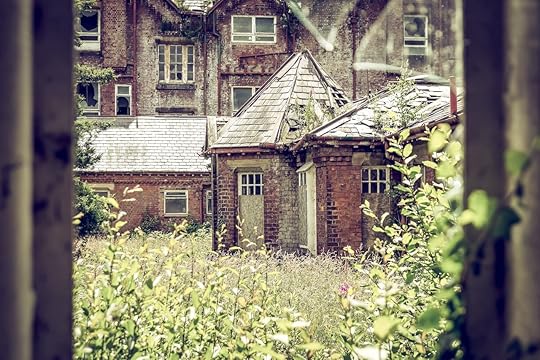
Photo: purplecustardvideos/Shutterstock
There are few places more chilling than old asylums. While we partly have horror movies to thank for that, we also have genuinely creepy places like the Whittingham Asylum, which was once the largest mental institution in the UK. Opened in 1973, the asylum was built to treat those with mental illness but also treated soldiers during WWI and WWII. The asylum finally closed in 1995 after allegations of abuse against patients. The site is currently closed, and many of the original buildings have been torn down.
25. Kolmanskop, Namibia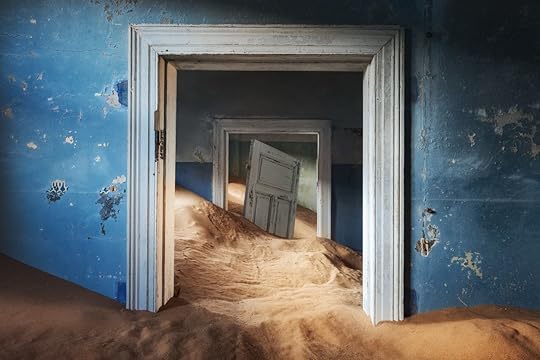
Photo: Smelov/Shutterstock
In 1908, a railway worker found a diamond while cleaning the train tracks in the port town of Lüderitz in Namibia. His find was the start of a diamond rush and the impetus for the construction of the town of Kolmanskop, which sprung from nothing a few miles away from Lüderitz and quickly filled with prospectors. National Geographic reports that by 1912, Kolmanskop produced “a million carats a year, or 11.7 percent of the world’s total diamond production.” After years of intensive mining, the well of precious stones dried up and the inhabitants all left, abandoning Kolmanskop entirely in 1956. Since then, it has been reclaimed by the desert, with sand taking over the buildings. Now it’s a popular tourist destination and photography site.
26. Slab City, California
Photo: Nagel Photography/Shutterstock
Only a short 20-mile drive from Bombay Beach, Slab City sits outside Niland in a remote area of California’s Colorado Desert. Once a former US Marine Corps base, the camp was abandoned by the end of WWII, leaving concrete slabs on which they used to experiment behind. Squatters quickly claimed the area as their own and used slabs to build structures to live in. The site has no electricity, running water, or sewers, and there’s no law enforcement or taxation for those who live there. Today, Slab City remains the gathering place of squatters, snowbirds, drifters, and homeless people.
27. Bannerman Castle, Pollepel Island, New York
Photo: Felix Lipov/Shutterstock
Bannerman Castle is a replica of a Scottish castle built by Scotsman Frank Bannerman in the early 20th century. Frank Bannerman, a businessman in the military surplus industry used the castle as a storage facility for his work and had a residence built nearby for his own usage. In 1969, long after his death, the castle was destroyed by fire. There are tours available for those who wish to visit the island and see the castle up close. Events are regularly organized, such as plays and movie nights. Today, the island and its structures are run by The Bannerman Castle Trust, Inc.
28. Tillamook Rock Lighthouse, Oregon Coast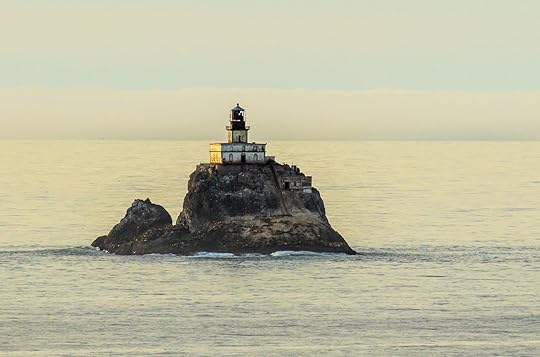
Photo: Bob Pool/Shutterstock
Tillamook Rock Lighthouse was officially lit in 1881 and quickly nicknamed “Terrible Tilly” due to the extremely difficult conditions (for both physical and mental health) lightkeepers experienced during their shifts. It was eventually decommissioned in 1957. Now, it’s privately owned and, as a former licensed repository for the ashes of the dead, home to 30 urns. The lighthouse was listed on the National Register of Historic Places and is part of the Oregon Islands National Wildlife Refuge.
29. Craco, Italy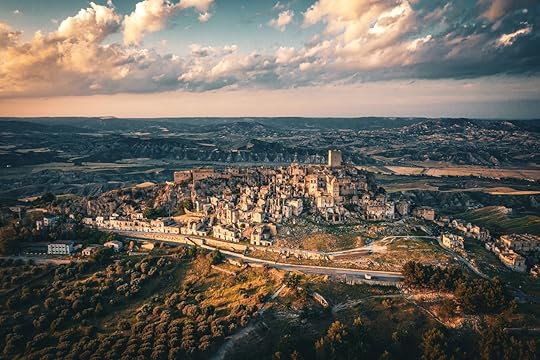
Photo: Pavlo Glazkov/Shutterstock
Italy has a way of making even its more derelict, abandoned towns seem beautiful, and Craco is no exception. The summit where Comune di Craco sits may have been inhabited as early as the ninth or tenth century, but the town dates back to 1000 AD. However, due to severe landslides linked to seismic activity, the town was abandoned in its entirety in 1991. The town has become a tourist attraction and even a filming location. It was added to the watch list of the World Monuments Fund in 2010.
30. Seattle Underground, Seattle, Washington
Photo: Zack Frank/Shutterstock
Thirty-one blocks of Seattle were destroyed in the Great Seattle Fire of 1889. The city was rebuilt from stone and brick a few feet higher than the original street grade, leaving a subterranean network of ruined shops, streets, and pathways. A tour of the Seattle underground is a must to truly get acquainted with the city’s bones.
31. Six Flags New Orleans, New Orleans, Louisiana
Photo: Kristina Rogers/Shutterstock
Six Flags New Orleans is a popular theme park in the Big Easy, but not for the reasons one might think. When Hurricane Katrina hit the Gulf Coast in 2005, an estimated 80 percent of the city was underwater. That included the 162-acre Six Flags amusement park. Now it’s abandoned, overgrown with plants, covered in debris and graffiti, and in disrepair. It is currently illegal to visit the grounds of Six Flags New Orleans.
32. Al Madam, Abu Dhabi
Photo: Katiekk/Shutterstock
At Al Madam, it’s tough to tell where the sand ends and the buildings begin. Al Madam is a ghost village drowning in sand, consisting of just two rows of houses and a mosque. The town, located just one hour’s drive from Dubai, was first built in the 1970s for the Bedouin population and abandoned soon afterward without any clear reason. Al Madam is now on the radar of travelers to the UAE who want the thrill of visiting an abandoned village.
33. Floating Forest of Homebush Bay, Sydney, Australia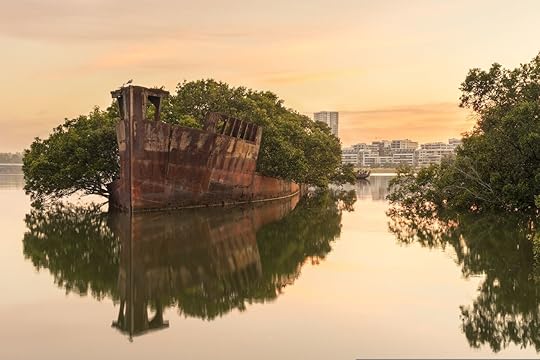
Photo: Duncan Struthers/Shutterstock
Contrary to its name, the Floating Forest is not, in fact, a forest. It’s a decommissioned ship sitting in Homebush Bay, and its name refers to the greenery that has overtaken the hull. Fully grown mangrove trees now adorn this rusted old boat, lending some color and life to an abandoned vessel. Originally called the SS Ayrfield, the boat was built in 1911 in the UK as a steam collier, and was later used to bring supplies to US troops stationed in the Pacific during World War II. It was retired in 1972 and sent to Homebush Bay, where it has remained ever since.
34. San Juan Parangaricutiro, Mexico
Photo: stacyarturogi/Shutterstock
The eruption of the Parícutin volcano in 1943 devastated the two villages that sat in its shadow. The lava took over everything except the top part of the San Juan Parangaricutiro church, which now sits as the sole survivor of the nine-year-long eruption. The lava flows covered the first 30 feet of the church, but the rest of the building — including its impressive bell tower — remains.
35. Aniva Rock Lighthouse, Sakhalin Island, Russia
Photo: Gribov Andrei Aleksandrovich/Shutterstock
Built by the Japanese in 1939 on a rock off the coast of Sakhalin Island, Russia, the Aniva lighthouse (and Sakhalin Island) was annexed by the Russians after World War II, in 1945, after being under Japanese rule for 40 years. The lighthouse was made autonomous (no need for keepers) in the 1990s and was totally abandoned in 2006.
36. Teufelsberg, Berlin, Germany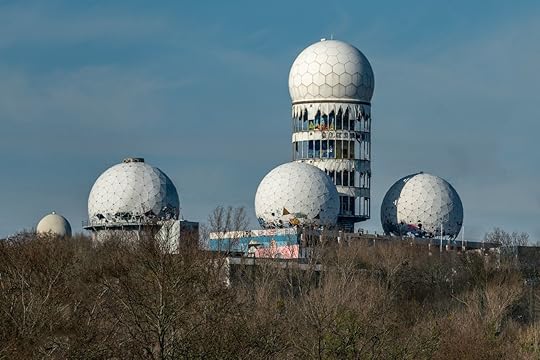
Photo: TeleMakro Fotografie/Shutterstock
This former Cold War American listening station sits on a hill of rubble in Berlin. The hill’s rubble covers an unfinished Nazi university faculty for military technology, and in the 1950s, the hill was capped by a US listening station. The former station is now in disuse but open for public tours. A 90-minute guided historical tour is currently offered, as well as a flashlight hike.
37. Train Cemetery, Uyuni, Bolivia
Photo: takepicsforfun/Shutterstock
Located on the outskirts of the town of Uyuni, the train cemetery is filled with old trains that have completely succumbed to rust. In the 20th century, there was a plan to create a large railway network out of Uyuni, but the idea was scrapped, leaving over 100 trains to rust and be forgotten. There are no restrictions here, so visitors are free to explore the trains themselves and even climb on top of them.
38. Valley of Mills, Sorrento, Italy
Photo: Crazy nook/Shutterstock
If you’re coming to the Valley of Mills to check out some cool, functional flour mills, you’ll be disappointed. The valley is a grouping of stone flour mills, sawmill, and a washhouse, built as early as the 13th century built in a rock fissure. Once the flour milling industry died out, the mills were closed and abandoned in the 1940s. Now the old buildings have been completely overtaken by foliage, making for a spectacular sight when viewed from above the canyon.
39. Canfranc International Railway Station, Huesca, Spain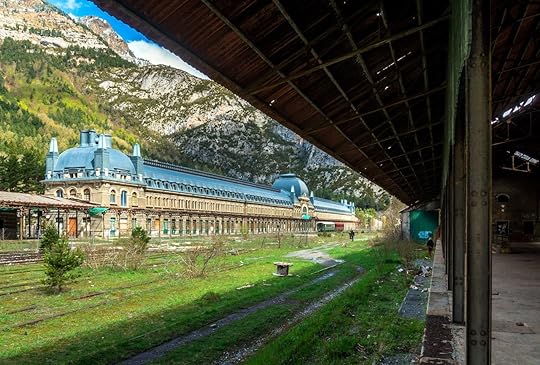
Photo: M. Vinuesa/Shutterstock
This is yet another beautiful train station where you shouldn’t expect to find any operational trains. Opened in 1928 as a major hub for international railway travel, the Canfranc train station played a significant role during WWII thanks to its strategic position on the border between Spain and France; however, services ceased in 1970, and the station has been out of use and neglected ever since. Recently, the station received funding to undergo renovations, so this site might not stay abandoned for much longer.
40. Sarajevo Olympic Luge Track, Bosnia and Herzegovina
Photo: chrisontour84/Shutterstock
There’s something about a place once dedicated to adrenaline and excitement falling into disrepair that piques the imagination. The Sarajevo Olympic Bobsleigh Track on Mount Trebevic was once the pride of the 1984 Winter Olympics. It was, however, severely damaged during the Bosnian war in the 1990s. The track is currently undergoing renovations with the aim of becoming usable once again.
41. Beelitz Sanatorium, Germany
Photo: Stefan Schierle/Shutterstock
Originally built in the late 19th century, the 60-building treatment complex was meant to rehabilitate tuberculosis patients in Berlin. It treated Adolf Hitler during World War I and later became a Nazi hospital during World War II. The hospital was taken over by the Soviet Army in 1945. It remained a Soviet military hospital until the collapse of the Soviet Union and was abandoned in 1994. In 2015, a treetops pathway was created above the ground of the sanatorium for everyone to be able to see the site safely.
42. Anping Tree House, Tainan City, Taiwan
Photo: Pierre Aden/Shutterstock
This isn’t your typical treehouse. It’s not located up in the boughs but right on ground level, and the structure has completely fallen victim to the encroachment of a banyan tree. Formerly a merchant warehouse complex in Tainan’s Anping District, the house was built in the 1800s. It has since been abandoned and now serves as the growing grounds of the banyan tree, whose branches and roots have completely overtaken the building. An elevated walkway has been added to the grounds so visitors can explore the rooms without getting entangled themselves. The site is a popular tourist attraction.
43. New York State Pavilion, New York City, New York
Photo: Alan Tan Photography/Shutterstock
A historic world’s fair pavilion in Flushing, Queens, the New York State Pavilion was designed for the 1964-65 World’s Fair. After the fair, although it was meant to be a temporary installation, it was kept intact while the rest of the pavilions were demolished. However, with no use for it, it deteriorated. A restoration of the pavilion is currently underway.
44. Bodie, California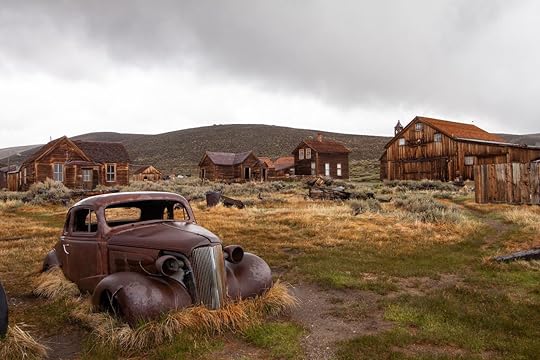
Photo: Boris Edelmann/Shutterstock
Bodie describes itself as a “town frozen in time.” Preserved by California State Parks, Bodie is a gold-mining ghost town that used to be home to 10,000 people. It became a State Historic Park in 1962. All the buildings are still maintained to look exactly as they did when they were built in the 1880s, making it a popular tourist attraction.
45. Varosha, Cyprus
Photo: Emrah AKYILDIZ/Shutterstock
Varosha has certainly undergone a fall from grace. Once the vibrant quarter of the resort city of Famagusta, the neighborhood has been abandoned and fenced off to visitors ever since 1974 when the city came under Turkish control, along with the northern part of Cyprus. Varosha is defined by its decayed buildings, as well as streets filled with rubble and overtaken by vegetation. Although some parts of Varosha are open, including the beach, the rest of the quarter remains off-limits to visitors for now. 
A version of this article was previously published on February 19, 2014, and was updated on February 2, 2021, with more information.
More like thisArchaeology7 historic sites that have been swallowed up by natureThe post 45 eerie, creepy, and often beautiful abandoned places around the world appeared first on Matador Network.

Carp as a good luck charm

At first glance, there’s nothing especially appealing about carp. The gray-green bottom feeders trawl the muddy depths of freshwater rivers, lakes, and ponds all over Eastern Europe (in the United States, carp is considered an invasive species and rarely eaten). The fish are hardly an attractive symbol of wealth and prosperity. Yet, thanks in large part to dietary restrictions imposed by Catholicism, carp are a beloved presence at Christmas dinner, and their scales highly prized.
In China and Japan, it’s a different story: Carp are known as koi, decorative and revered fish which populate ponds in temples and gardens, their shimmering red and gold patterned bodies resebelming jewels in the water. It’s no wonder that in Chinese and Japanese culture, koi can be signs not just of wealth but of career success and marital happiness — they’re sometimes even compared to powerful dragons.
Clearly, the humble carp is no fish to scoff at. This powerful creature — if you’re superstitious at least — can conjure wealth, good fortune, and even a promotion if you’re extra lucky. Here are five countries where carp symbolize good luck. And a word to the wise: Next time you eat carp, you might want to hang on to its scales.
1. China
Photo: nat.s/Shutterstock
In China, the word for carp (liyu) is a homophone with a similar pronunciation to the word for “enormous profits.” The “li” in the name also means power or strength. Carp are revered for their ability to jump through the Dragon Gate waterfall on the Yellow River. The image of a carp jumping over a gate or waterfall is considered a metaphor for prosperity and success, especially when it comes to career aspirations. Two carp swimming together — a popular motif on prints and other decorations — symbolizes fertility and domestic bliss. Because of their connection to wealth, carp often appear on red and gold Lunar New Year decorations, and carp is often incorporated into the celebratory feast as well: Eating mud carp — a homophone for the Chinese word for gifts — during Lunar Year festivities is thought to bring good luck.
2. Poland
Photo: Marcin Kadziolka/Shutterstock
In many Eastern European countries where carp is a beloved cultural symbol, Catholicism is at the root of its rise in popularity: Around the 13th century, Catholics adopted fish as their go-to meal during fasting days when eating red meat was not permitted (for the uninitiated, Christmas Eve is the final day of Advent, a month long period of fasting among Catholics). But in Poland, reverence of carp came even earlier. Since the 12th century, carp has been considered a fish fit for kings, so much so that fish bred in the Zator region, home to the most famous of Poland’s fish farms, are known as “royal carp.” Carp’s designation as the king of fish might have led to the superstition that keeping the scale of carp cooked on Christmas Eve in your wallet might attract wealth.
3. Czech Republic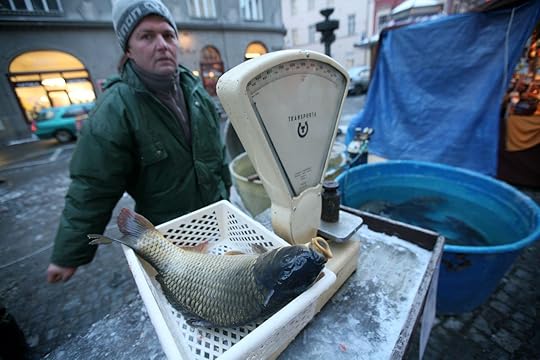
Photo: haak78/Shutterstock
Carp is the centerpiece of Christmas Eve dinner in the Czech Republic. It’s typically served in soup or it’s fried and accompanied by a side of potato salad. Like their Eastern European neighbors, people in the Czech Republic have been eating fish around Christmas for centuries, but holiday recipes that call for carp specifically did not appear (or were at least not recorded) until the 19th century.
Before the guests sit down to dinner, one scale from the fish is sometimes placed under the dinner plate. Then, once dinner has concluded, the fish scale is retrieved from under the plate and carried around in the recipient’s wallet until the following Christmas in order to attract prosperity and wealth. According to NPR, nearby Slovakia performs similar rituals around carp on Christmas Eve.
4. Japan
Photo: Hung Nguyen Long/Shutterstock
In Japan, carp are known as nishikigoi (or by their more common name, koi) — a title which means “living jewel.” Ornamental koi breeding began in the around the late 18th century, though they were first introduced to Japan from China as a food source in the first century. Today, glittering schools of lustrous red and gold koi can be seen in the ponds decorating Japan’s many gardens and temple grounds.
The fish are an important cultural symbol. According to legend, a group of koi fish swimming upriver encountered a waterfall. After 100 years of jumping, the koi finally reached the top of the waterfall and were transformed into dragons. The koi have since been regarded as a symbol of perseverance, ambition, power, and strength, in particular because of their determination to swim upstream. On May 5, Children’s Day, families hang koinobori — Japanese streamers in the shape of multi-colored koi fish — in front of their homes, to symbolize each member of the family in the hopes that the children will adopt the characteristics embodied by the koi.
5. Germany
Photo: Maddas/Shutterstock
On New Year’s Eve, known as Silvester in Germany, carp — either baked, pan-fried, grilled, or smoked — graces the dinner table. People sometimes put scales taken from the carp before the meal, which resemble coins, in their wallet to attract wealth throughout the year. In Eastern Germany, it’s also customary to bury carp bones at the foot of fruit trees, to encourage an abundant harvest in the spring. Nearby Austria practices similar traditions. 
The post In these 5 countries, carp is a good luck charm that brings wealth and prosperity appeared first on Matador Network.

Jordan lifts quarantine requirement

Traveling abroad still remains a difficult proposition these days, but if you’re itching to visit the Middle East, Jordan is making it slightly easier. As of January 26, 2021, passengers arriving to Jordan are no longer required to quarantine for seven days, making the prospect of vacation much more feasible. Travelers do, however, still have to show proof of a negative PCR test taken within 72 hours of departure and undergo a second PCR test upon arrival at their own expense (approximately $40).
Starting now, quarantine will only be required for those who test positive for COVID-19 upon arrival. In addition to the testing requirements, travelers must also have valid health insurance covering any COVID-19 treatment that may become necessary during their trip.
Note that incoming travelers will be asked to fill out a health form prior to boarding their flight to Jordan.
A nightly curfew remains in place for tourists and residents alike, beginning at 11 AM for individuals and 11 PM for commercial establishments. From the time curfew begins until 6 AM the following morning, individuals are required to stay home, unless going to the airport. 
The post Jordan is lifting its quarantine requirement for travelers appeared first on Matador Network.

Rent a private island cabin

West Virginia’s New River Gorge doesn’t just have the distinction of being the United States’ newest national park, it also has its own private island with beaches, trails, and a cabin for rent.
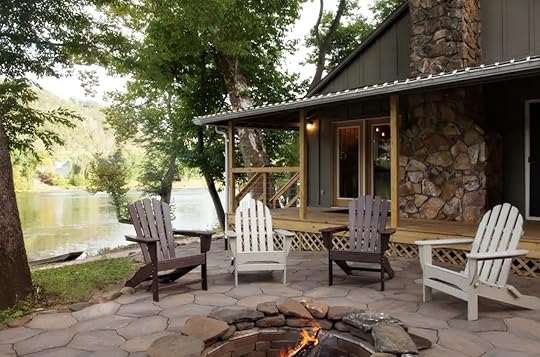
Photo: Airbnb
The Cabin on Coney Island is a private getaway on the southern end of the park, where the New, Greenbrier, and Bluestone rivers meet. The cabin, only accessible by way of watercraft, can house up to 10 people in three bedrooms, and has seven private acres of private beaches and trails.

Photo: Airbnb
There’s no shortage of activities to keep you busy on the island. You’ll be able to rent kayaks, rafts, and boats, go sightseeing at Sandstone Falls, or go zip lining across the Bluestone River Gorge.
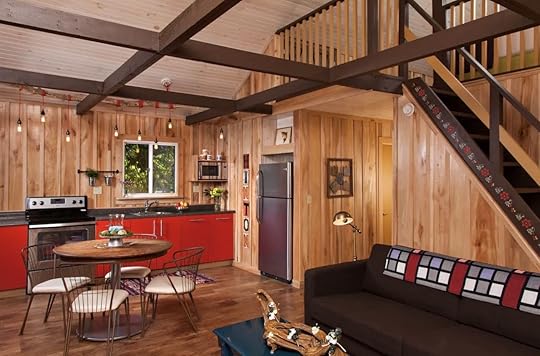
Photo: Airbnb
The island is incredibly peaceful. Holli Lathroum, marketing manager for the cabin’s owner, MountainPlex Properties, said to Travel and Leisure, “Mostly what you hear is the river rushing by. When you rent the cabin, you’re getting exclusive access to the island, which has paths that are well-manicured, but still feels like you’re out in the wild. The cabin lets out right onto a sandy beach and has a fire pit. It’s really an amazing place.”
The cabin is the park’s only private island rental, and costs $332 per night, which isn’t bad for having an entire island and cabin to yourself. The property is available on Airbnb for booking. 
The post The US’ newest national park has a private island cabin for rent appeared first on Matador Network.

Coachella and Stagecoach canceled

If you were holding out hope that the Coachella and Stagecoach music festivals could be in your future due to the COVID-19 vaccine rollout, it looks like you’ll have to wait until 2022. Coachella and Stagecoach were originally slated to be held in April 2020, but were then postponed to October. Since then, they’ve been rescheduled once again for April 2021, and now, the festivals have been officially canceled indefinitely.
Both festivals were canceled after a public health order released by Dr. Cameron Kaiser, the county public health officer for Riverside, CA.
Due to the pandemic, Public Health Officer Dr. Cameron Kaiser today (Jan. 29) signed a public health order canceling Coachella Valley Music and Arts, Stagecoach Country Music festivals planned for April 2021. We look forward to when the events may return. https://t.co/YAIn8uTea9
— Dr. Cameron Kaiser (@RivCoDoc) January 29, 2021
There is no word yet on when the festivals might be rescheduled, though Billboard has reported they may be moved to October 2021. The ultimate fate of the festivals will depend on the vaccine rollout in the US — especially in California — and the speed with which people get vaccinated. 
The post Coachella and Stagecoach have been officially canceled due to COVID-19 appeared first on Matador Network.

High resolution photos of snowflakes

They say every snowflake is unique, but that’s really just hearsay unless you can get a close enough look to actually prove it. Thanks to Nathan Myhrvold, the intricate designs of snowflakes can actually be seen in immense detail. Myhrvold, who served as chief technology officer at Microsoft for 14 years and has a background as a scientist, developed what he calls the “highest resolution snowflake camera in the world,” producing beautifully detailed images of snowflakes.

Location: Timmins, Ontario; Fairbanks, Alaska; Timmins, Ontario. (Photo: Nathan Myhrvold/Modernist Cuisine Gallery, LLC)
Myhrvold was first inspired to photograph snowflakes 15 years ago after meeting a professor at the California Institute of Technology, who was studying the physics of snowflakes at the time.
He told Smithsonian Magazine, “In the back of my mind, I thought I’d really like to take snowflake pictures,” Myhrvold said. “About two years ago, I thought it was a good time and decided to put together a state-of-the-art snowflake photography system…but it was a lot harder than I thought.”

“Ice Queen”; Location: Yellowknife, Northwest Territories, Canada. (Photo: Nathan Myhrvold/Modernist Cuisine Gallery, LLC)
Myhrvold’s revolutionary snowflake camera is part-microscope and part-camera. He equipped his 50-pound camera system with a thermoelectric cooling system, a carbon fiber frame, and LED lights, which give off less light and prevent the snowflake from melting too quickly. To catch the snowflakes, he clamped a black-painted foam board to the end of a mop handle, and used that surface to determine which ones to photograph. He then takes as many pictures as he can before the snowflake melts.

“No Two Alike”; Location: Fairbanks, Alaska, US. (Photo: Nathan Myhrvold/Modernist Cuisine Gallery, LLC)
“Only one out of every thousand snowflakes is perfect enough to photograph,” he said. “Often, they’ll stick together, so you can’t take too much time and you have to pick the best one you can quickly transfer. You really want to get them on the microscope right away.”
While the significance of the camera to the study of snowflakes is unclear, it certainly offers an eye-opening look into the intricacies of their design, and lends some credence to the old saying, “Every snowflake is different.” 
The post Photographer captures the clearest images of snowflakes ever seen appeared first on Matador Network.

February 1, 2021
Best cities for LGBTQ singles

Cities like San Francisco, New York, London, and Berlin have historically been the Swiss army knives of LGBTQ life: They’re considered the best places to live, work, and play if you’re young, single, and gay.
Today, queer birds of a feather still flock blindly to these popular metropoles, but living in a city is like living with a lover. Staying tethered to a town just because of its queer history is like staying in a relationship just because it’s safe.
For single queer folx unburdened by work or family, heed the immortal words of Mama Ru: “If you can’t love someone else, at least love where you live.” Okay, maybe she never said that — but the sentiment is still valid. Whether you’re in search of a strong queer community, a culture of acceptance, a less expensive lifestyle, or a vibrant cultural hub, life in one of these underrated cities for LGBTQ singles may help you find happiness with the most important love of your life — yourself.
1. Cologne, Germany
Photo: trabantos/Shutterstock
Queer folx in a monogamous relationship with Berlin need to break up and expand their horizons. Cologne is like the other LGBTQ white meat, and it’s time to taste the rainbow. Located on the River Rhine, this cultural hub for film, fine art, and crisp Kolsch beer might not be the most architecturally pleasing (okay, it’s a complete eyesore), but what it lacks in outward aesthetics it makes up for in queer chutzpah.
Cologne is so gay it couldn’t contain itself to one gayborhood. Twinks, twunks, and the wolves who love them lose themselves in the city’s “Bermuda Triangle” — a nickname for the bars around Rudolfplatz on Schaafenstrasse. Leather daddies and papa bears will find their crew in Altstadt near Heumarkt. Throughout the year, events like the well-attended Christopher Street Day Pride parade (June), Carnival (February), and the Heavenue Gay Christmas Market (December) transform the entire city into an international meat rack ideal for singles scoping the field.
But the real reason Cologne is excellent for singles is its proximity to Western Europe’s sexiest cities. Amsterdam, Brussels, and Paris are only a few hours away by train. German destinations like Bonn, Dusseldorf, and Frankfurt are all easy day trips. Even Berlin is only a five-hour ride eastward on the ever-punctual Deutsche Bahn, which means you’re only half-a-day away from having an open relationship with Europe’s queerest locale.
2. Salt Lake City, Utah
Photo: Austen Diamond Photography + Visit Salt Lake
Salt Lake City might be synonymous with conservative Mormon culture, but the LDS church is just a red herring — SL, UT is the LGBTQ community’s best-kept secret. Sure, the angel Moroni sits atop the mighty temple overlooking town, but dancing below him is a city filled with queer folx. Roughly 4.7 percent of the population identifies as LGBT, which means there are more gays per capita in the Mormon promised land than in either New York or Los Angeles. On top of that, it’s cheaper: Living expenses in SLC are over 30 percent cheaper than in LA.
Local gay life centers around a smattering of gay bars near the Marmalade District and Sugar House, but queerness permeates the entire city. Between its tattoo-clad hipsters, a surprisingly vibrant theater scene, and the wealthy snow bunnies who hop around Park City for ski season, the LGBTQ community has plenty of places to find local friends.
The dating pool might be smaller than it is in major cities, but who cares? Once you’re tired of the local trade, treat yourself to a solo hike in the glorious Wasatch Mountains. If bears tickle your fancy, you’ll find plenty hiding in the woods. For those with a bear bias, you can always hop on a plane to go elsewhere. With a lifestyle that’s 30 percent cheaper, it’s easy to afford airfare to nearby cities like Denver, LA, Seattle, or Austin — all of which are only a couple of hours away.
3. Reykjavik, Iceland
Photo: Shutterstock/TTstudio
Iceland’s queer population might seem minuscule compared to spots in the US and Europe, but it’s not the size that matters — it’s what you do with it. That’s why Iceland has topped the Williams Institute’s LGBTQ Global Acceptance Index for nearly 20 years. It’s also why Reykjavik was awarded first place on PlanetRomeo’s Gay Happiness Monitor. LGBTQ folx rarely face discrimination in Iceland’s capital. The city’s dating apps might recycle the same faces over and over like any small city, but this destination offers queer singles something more critical than a one-night stand — it provides camaraderie.
Iceland’s government is a world leader for LGBTQ rights, and almost everyone in Reykjavik celebrates the annual Pride festival. In 2019, President Guðni Jóhannesson even trolled Mike Pence, America’s anti-gay former Vice President, by greeting him with rainbow flags and donning a rainbow bracelet. Acceptance and equality aren’t dreams in Iceland — they’re mandates.
Although there’s only one bar in Reykjavik — Kiki Queer Bar — the city hosts several big festivals throughout the year that attract sizeable crowds. In March, Rainbow Reykjavik throws a three-day celebration with events in and around the city, and in September, Bears on Ice turns the Blue Lagoon into a boy bath. For social butterflies and dance hall divas, this might not be enough queer activity, but single life in Reykjavik is less about wild soirees and more about solitude. Being in a relationship with Iceland is wild enough. With active volcanoes and explosive geysers aplenty, adventurous types will find stimulation simply by exploring the landscape.
4. Montreal, Quebec
Photo: Kristi Blokhin/Shutterstock
Montreal is the best destination for queer singles with commitment issues because it’s like multiple cities rolled into one. Old-world Paris blends with hipster Brooklyn and Canada’s culture of kindness to make a town more tempting than a heaping plate of poutine.
The queer community will find their kin along St. Catherine Street — the center of le Village Gai — where 180,000 colorful plastic balls hang overhead to mark the territory. As one of North America’s largest gayborhoods, this area is basically one neverending party in summertime: LGBTQ-centric restaurants, clubs, saunas, and boutiques stretch out for nearly a mile. Although the buzzing sidewalks slow down as locals brace themselves for winter, the emergence of spring makes the LGBTQ community friskier than a patron doling out loonies and toonies at Stock Bar (one of Montreal’s famous all-male strip clubs).
Toronto is usually Canada’s top pick for all things LGBTQ, but Montreal is less expensive, more cultured, and secretly sexier. Gastronomes will salivate over French-style patisseries and classic Jewish delis. Cozy cafes dot Old Montreal’s cobblestone streets, and trendy bars line the graffiti-strewn sidewalks of St. Laurent Boulevard. Between its world-class museums (check out the Montreal Museum of Fine Arts) and hundreds of performing arts companies, Montreal doesn’t give you the option to get bored. And, of course, the locals speak Quebecois — which is like the naughty version of French. Who doesn’t love wrapping their tongues around a foreign word? As the locals say in Franglish — “C’est le fun.”
5. Brussels, Belgium
Photo: Koverninska Olga/Shutterstock
Nearby Paris is known as the City of Love, but being single and queer is sweeter — and cheaper — in Brussels. Between the Belgian waffles, Belgian frites, Belgian chocolate, and Belgian beer, who has room for lovers?
Brussels’ small-but-mighty LGBTQ scene centers around Rue du Marché au Charbon in Saint Jacques. Here, you’ll find a bevy of gay bars and cafes that come alive on the weekend. Regular events — like Pride, the film festival Pink Screens, and La Demence — a monthly circuit-queen magnet — draws an international array of LGBTQ folx.
The city has plenty to offer outside of queer life, too. If you want art, you can study Magritte at the Musées Royaux des Beaux-Arts. If you want architecture, you can stroll from ornate 19th-century mansions to modern masterpieces like the Atomium. If you’re searching for green space, the city’s 8,000 hectares of trails, fields, and forests eclipses anything you’ll find in nearby cities like London or Amsterdam.
Still, Brussels gets a bad rap for being boring. As the European Union’s unofficial capital, work-obsessed politicos and stuffy heads of state seem to run the show, but underneath the prim and polish of Parliament lies a bohemian crowd characteristic of the blithe Bruxellois spirit.
And, for the record, even the politicians in Brussels know how to get down. Just ask former European Parliament member József Szájer, a conservative from Hungary who authorities caught at a gay sex party in December. Nothing boring about that, is there?
6. Montevideo, Uruguay
Photo: Birdiegal/Shutterstock
Argentina and Brazil might take the cake when it comes to popular queer travel in South America, but often-overlooked Uruguay is like the dessert you wish you picked instead. Not only is Uruguay a progressive bellwether for gay rights in South America, but it’s also an international trendsetter for trans rights. Gender confirmation surgery is free for all residents, and as of 2018, trans residents can change their name without seeking approval from a judge.
Queer singles should head straight to Montevideo, Uruguay’s capital. September attracts a global community for Marcha por la Diversidad, Montevideo’s Pride celebration, while spots like Chains Pub and Il Tempo welcome queer clientele year-round. There isn’t a central gayborhood, but there isn’t any need. Whether you’re crammed into a tiny tango bar or getting down at a beachfront disco, LGBTQ visitors are welcome nearly everywhere.
Between the abundance of theater, music, and fine art you’ll find weaving through the city’s Art Deco facades and highrises, there’s a little something for all anyone flying solo in Montevideo. And, of course, marijuana is legal, which means you can spend an entire day strolling the city’s 14-mile beach while smoking a doobie. With a glittering bay before you and shining skyscrapers at your back, you’ll understand why Montevideo regularly beats Buenos Aires as South America’s city with the highest quality of living.
7. Taipei, Taiwan
Photo: Sean Pavone/Shutterstock
Taipei is undisputably East Asia’s queer capital. After Taiwan made headlines in 2019 by legalizing same-sex marriage, Taipei became the first prominent Asian metropolis to join Rainbow Cities Network — an international alliance committed to protecting and supporting LGBTQ communities.
The epicenter of LGBTQ life is in Ximen, the gayborhood, and its crowning jewel is Red House — a multi-level cultural center where you’ll find gay bars, clubs, restaurants, and queer specialty shops for things like sex and clothing. But the thing that makes Taipei worthy of singledom is the overwhelming cultural smorgasbord found outside of Ximen.
The heart can be a lonely hunter when dining alone, but in Taipei, the city is your de facto dinner date while sampling street eats at one of the city’s many night markets (try Rahoe for starters). Whether you’re in the mood for stinky tofu or bubble tea, these markets provide inexpensive ways to eat well without stressing about who’s picking up the check.
The rest of the city is just as accessible. Taipei’s easy-to-use public transit system ensures you never have to worry about getting yourself home after a boozy brunch, an epic hike up Elephant Mountain, or a sun-soaked Saturday at Shalun Beach, a cruisy gay spot.
For lovesick singles pining for a Designated Date, the Wei-ming Temple in New Taipei City provides the cure. In 2006, this Taoist sanctuary became the first religious shrine in the world dedicated to gay romance. Each year, nearly 9,000 visitors come in the hopes that Tu’er Shan, the Rabbit God of homosexual love, will help them find their mate. But be careful what you wish for — nothing ruins singledom in Taipei like a significant other.
8. Melbourne, Australia
Photo: Neale Cousland/Shutterstock
Every year, the Time Out Index surveys an international set of city slickers to see what urban areas are the most livable. In 2020, Melbourne took second place. Not only are the residents some of the world’s happiest, but they’re also considered some of the most creative. This creativity shows up in the city’s multicultural food scene, its proliferation of colorful street art, and in a mighty theater community that gave birth to performers like Cate Blanchett. Only New York City ranks higher on Time Out’s list, but when it comes to the cost of living, Melbourne comes out on top. Life in this wonder down under is nearly 50 percent less expensive than life in the Big Apple, making it an ideal spot for singles pinching pennies.
When ranking queer life in Australia, Melbourne usually takes second place again — this time to Sydney. Melbourne’s decentralized gayborhood, split between Collingswood and South Yarra, makes LGBTQ life more difficult to find than in the capital of Oz — unless it’s festival season. For two months every year, the city drapes itself in rainbows to celebrate their queer residents during two prominent festivals. Midsumma, the most popular, hosts parades, performances, and parties from mid-January to mid-February; the second, Midwinta, occurs in late July. Both are akin to Sydney’s Mardi Gras, bringing thousands of LGBTQ folx and their allies together to participate.
But Melbourne doesn’t need a festival to show how LGBTQ-friendly it is. Unlike cities where the LGBTQ community is segregated to a gayborhood, all of Melbourne’s coffee shops, beer gardens, sports arenas, and nightlife haunts are equally welcoming. With that sort of radical inclusivity, it’s time to stop rating Melbourne as second place and call it what it is — the best. 
The post 8 underrated cities for LGBTQ singles around the world appeared first on Matador Network.

First 3D-printed in Madagascar

It’s easy to think that 3D printers are only good for churning out small, block-like shapes. At the height of their functionality, and when used to their fullest potential, 3D printers can create entire buildings, and even help alleviate a humanitarian crisis. Maggie Grout, funder of the nonprofit Thinking Huts, is planning to use 3D printers to build schools that serve children with little to no access to education in Madagascar.

Photo: Thinking Huts/Facebook
Grout partnered with design agency Studio Mortazavi to create the world’s first 3D-printed school, set on four acres of land on Madagascar. Slated to open in winter 2021-22, the pilot school will be built on the university campus of Ecole de management et d’Innovation Technologique to serve local Malagasy students.

Photo: Thinking Huts/Facebook
The 3D-printed school will have a beehive design that allows multiple schools to be attached — with buildings for libraries, physical education, music, and the arts. Each structure will be outfitted with vertical farms and solar panels, as well as walls created by the 3D printer.

Photo: Thinking Huts/Facebook
The aim of the Thinking Huts project is to inspire innovation and create opportunities for children in Madagascar, and eventually to build a Thinking Hut in every community where children don’t have access to education. “The need for education infrastructure in Madagascar — and around the world — is enormous,” says Grout, “and our concept is scalable as we continue to build schools with communities where they are needed most.” 
The post The world’s first 3D-printed school is being built in Madagascar appeared first on Matador Network.

Matador Network's Blog
- Matador Network's profile
- 6 followers



